Samsung’s 2024 OLED TV looks to solve the glare problem — and I tried it out
Content is created by CNN Underscored’s team of editors who work independently from the CNN newsroom. When you buy through links on our site, CNN and its syndication partners may earn a commission. Learn more
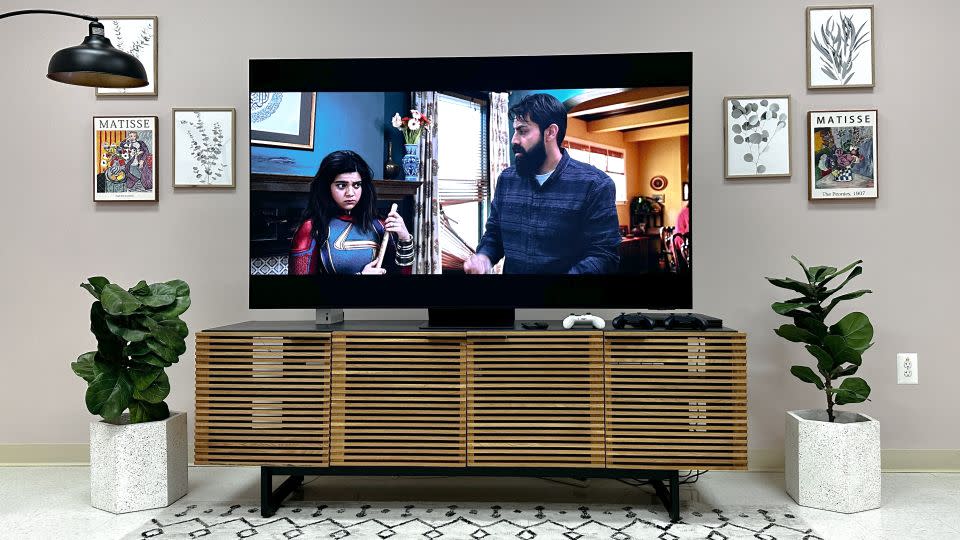
Samsung’s 2024 OLED TVs and QLED TVs are ready to take a bow, with orders live at this very moment following their mid-March release date. But which will make it to the ranking of the best TVs? To find out, we ventured to a Samsung facility for an early hands-on preview time with four of the company’s most exciting new sets.
I’m covering a traditional trio of TVs here, with Samsung’s latest OLED technology and its new AI-optimized 4K and 8K panels.
And if you buy one of Samsung’s 2024 TVs, you’ll get a free 65-inch Samsung TV thrown in gratis, because we live in the most surprising moment.
Samsung S95D OLED 4K TV
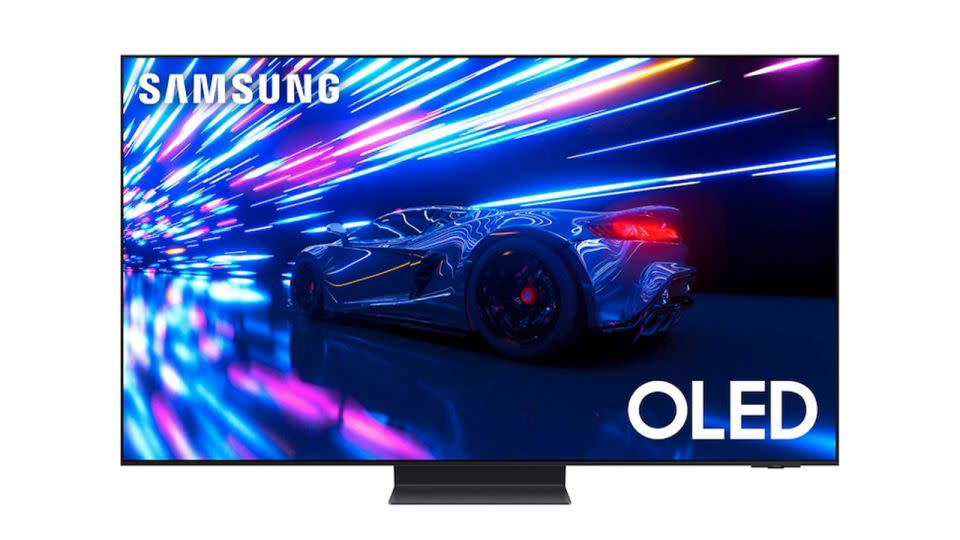
These new TVs look great and do a good job of pushing back at reflections, but closer look at Samsung’s glare-fighting tricks make us doubt the literal accuracy of its “Glare-Free” boast.
Samsung QN90D Neo QLED 4K TV
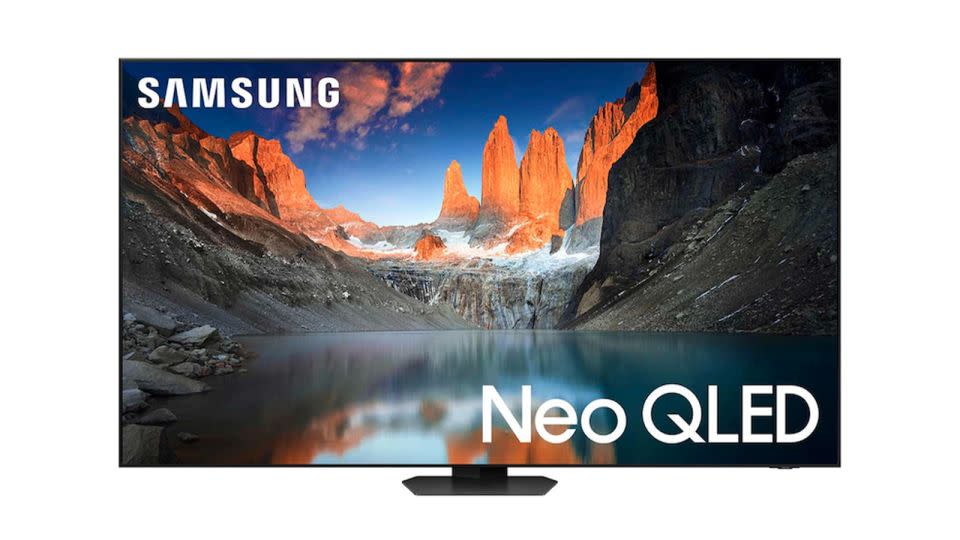
Samsung’s AI smarts do a decent job at upscaling sub-4K content for this UltraHD TV.
From $1,500 at Samsung
From $1,498 at Amazon
From $1,500 at Best Buy
Samsung QN900D Neo QLED 8K TV
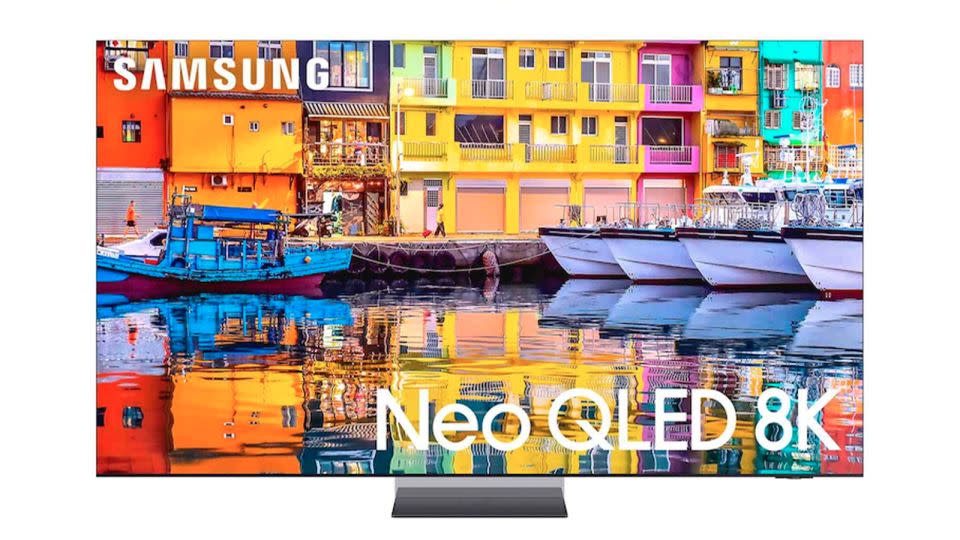
Bigger TVs may not have matching 8K content (yet), but Samsung’s tricks seem to make it work.
From $5,000 at Samsung
From $4,998 at Amazon
From $5,000 at Best Buy
Samsung’s S95D OLED TVs are all about fighting glare
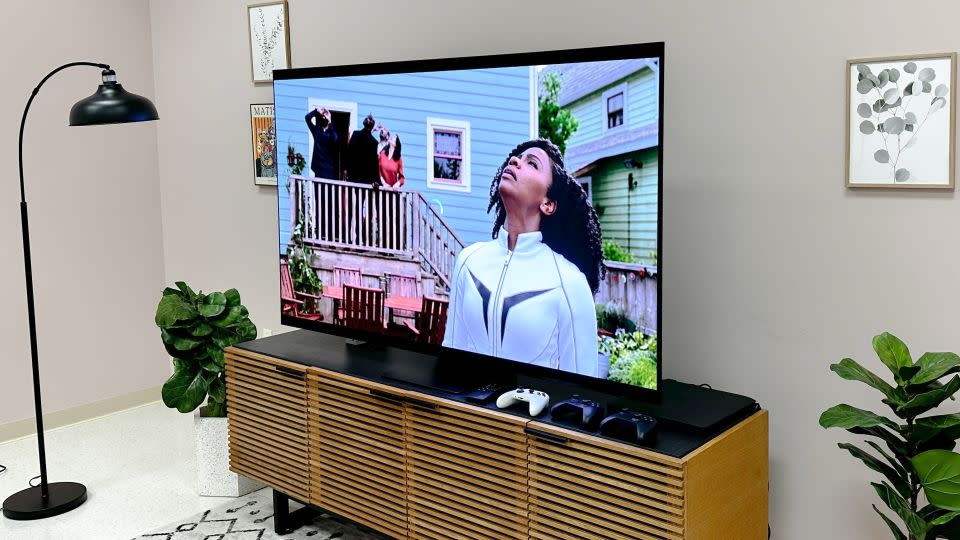
When you read about OLED TVs, you often find writers waxing poetic about their excellent picture quality that combines strong colors with sharp contrast. But there’s an elephant in the room: these screens often pick up a lot of glare. I know from firsthand experience, as I often think about blackout curtains that could help cut down on reflections during darker scenes I see on my beloved 55-inch LG C2 OLED TV.
So imagine my delight when I saw Samsung’s CES 2024 booth boast its new “glare-free” OLED technology-equipped TVs. And when I got to see the 77-inch S95D (the largest size it will come in), I noticed this new screen technology looks pretty good, even if it isn’t exactly glare-proof. While the Samsung facility’s overhead fluorescent lighting didn’t appear on the screen as I watched “John Wick,” “The Marvels” or “Spider-Man: Across the Spider-Verse,” I didn’t accept these claims there — as I’m not going to be watching movies under those lighting conditions.
So, we turned the lights off in the room, turned on my 4K Blu-ray of Matt Reeves’ “The Batman” and then used my iPhone 15 Pro Max’s flashlight to practically inject glare onto the screen. And, pleasantly, less reflection showed up on the 77-inch panel than I expected.
We also tested the new Designed for Samsung Controller for Xbox on this TV while playing some Forza Motorsport, via the cloud, and appreciated that the controller offers a dedicated TV power button for those who don’t want to rely on HDMI-CEC controls. And while Tekken 8 looked nice and crisp running on an Xbox Series S throughout the day, playing Motorsport over the cloud was hampered by local Wi-Fi issues.
Overall, though, everything we watched on the S95D looked excellent, from the details in Mr. Wick’s chaotic fights to the purples and blues of Gwen Stacy’s world in “Spider-Verse.” We look forward to our intensive testing of the S95D TV in our personal labs, where real-world lighting should be a better test of its “glare-free” claims. And, of course, more time with the S95D will help us make sure that this new technology of Samsung’s doesn’t come at the cost of any picture quality.
Such potential innovation certainly costs a pretty penny, as the S95D (which ranges from 55 to 77 inches) starts at $2,599 — twice as much as I paid for my LG C2 OLED (on sale for Prime Day, months after its release). Samsung’s also selling more-affordable 2024 OLED TVs in its S90D lineup, which starts at $1,999 (at 55 inches) and doesn’t feature its glare-free technology.
Samsung’s latest 4K QLED TV certainly looks good
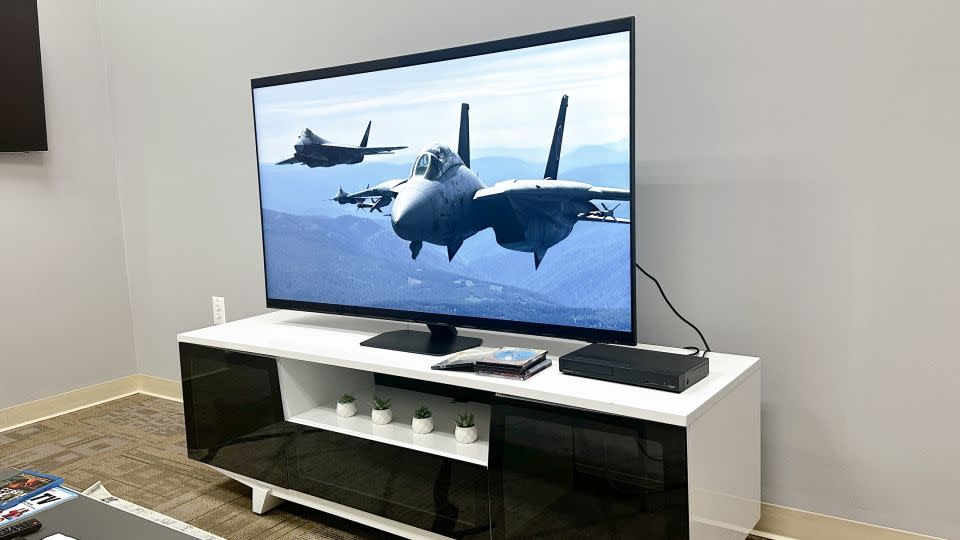
I then took a look at Samsung’s new 4K Neo QLED set, the QN90D. Since Samsung’s promoting how this set improves “content” to 4K quality, I booted up my Netflix account to turn on “Pacific Rim.” The streaming titan only offers this movie in HD — and I wanted to see how the AI tech upscales it for the 4K screen. That TV’s new NQ4 AI Gen2 processor, which optimizes both picture and sound, seems to know what it needs to do, as all of the text glowing inside of giant robots in Guillermo Del Toro epic film looked crystal-clear on that 65-inch screen.
Other improvements in this year’s 4K QLED screen include an AI Customization mode where the picture settings can automatically adjust for the kinds of content you’re watching. Audio should also improve with the Active Voice Amplifier Pro tool for those tired of leaning on subtitles to understand dialogue they just can’t hear clearly enough.
Also, both the Xbox game Hi-Fi Rush and my 4K Blu-ray of “Top Gun: Maverick” looked great on this set, as reds and blues (and much more) rendered boldly in both.
These are the most affordable TVs we saw, with the QN90D starting at $1,499 and ranging from 43 to 98 inches. Samsung also revealed the pricing for its new (and more affordable) QN85D TVs, which range from 55 to 85 inches and start at $1,399. Those sets aren’t rated for the highest HDR, frame rates and object tracking sound.
Even the new 8K QLED impressed
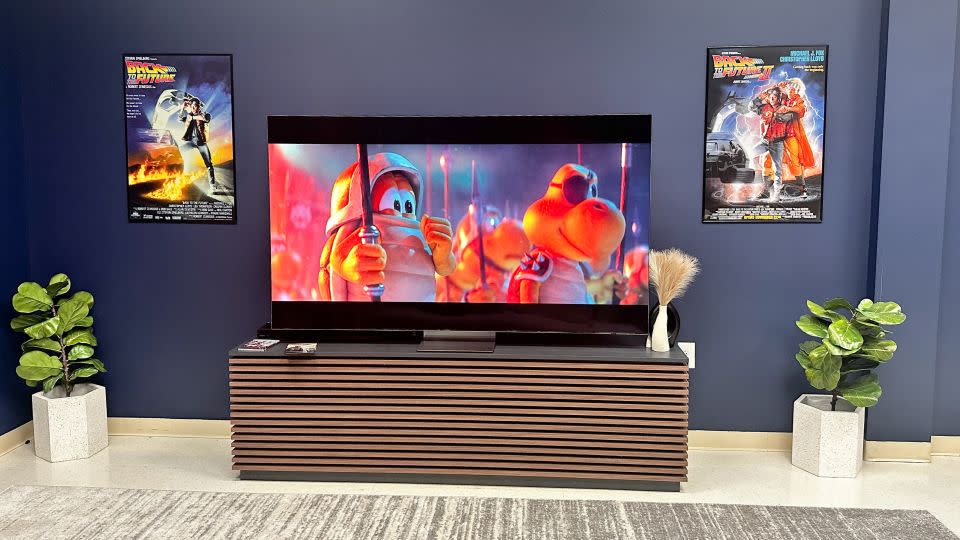
At a time where there’s not enough 4K movies readily available, I often ponder why 8K displays exist. The answer, as I saw when checking out Samsung’s 85-inch 8K Neo QLED (QN900D), is “well, we can make bigger TVs that still look good.” As I streamed Netflix’s 4K version of “The Super Mario Bros. Movie,” I noticed it looked crisp, and that picture quality improved once I toggled the Intelligent Mode that optimizes for all of your specific situational concerns, such as content and ambient lighting.
The whole trick to selling the public on 8K TVs at this moment lies in upscaling the existing 4K and lesser content to look good on a XXL display. And at this stage, I’d be tempted if I wanted a huge display, because my 4K Blu-ray of “Top Gun: Maverick” looked as good on this TV as any Samsung showed us, and its giant screen felt more impressive and immersive. That Intelligence Mode did its best work here, making color output more natural and less oversaturated than it did in Standard mode. For example, the colors of Rooster’s helmet gained some accuracy as I turned on this feature, as did the skies around the fighter planes.
The QN900D line ranges from 65 to 85 inches, and starts at a whopping $4,999. Samsung’s also releasing the QN800D 8K sets, with slightly less AI, HDR and object tracking sound, which range from 65 to 85 inches and start at $3,499.
The takeaway
As I always say during hands-on product time, “can’t wait to get these back to the lab.” And Samsung’s new TVs are no different, especially if its new anti-glare technology is more “glare-proof” than “glare-resistant.” For now, I’ll merely say that these three TVs looked pretty great, and worthy of consideration. And if Samsung’s truly advanced in the war against OLED reflection and glare, it will be landing a serious haymaker in the war for your living room’s biggest blank space. But I’m not ready to write their name on the throne yet. Stay tuned for our full reviews.
Note: The prices above reflect the retailers' listed price at the time of publication.
For more CNN news and newsletters create an account at CNN.com

